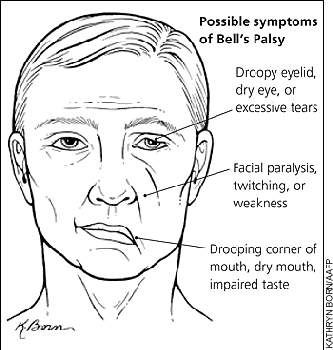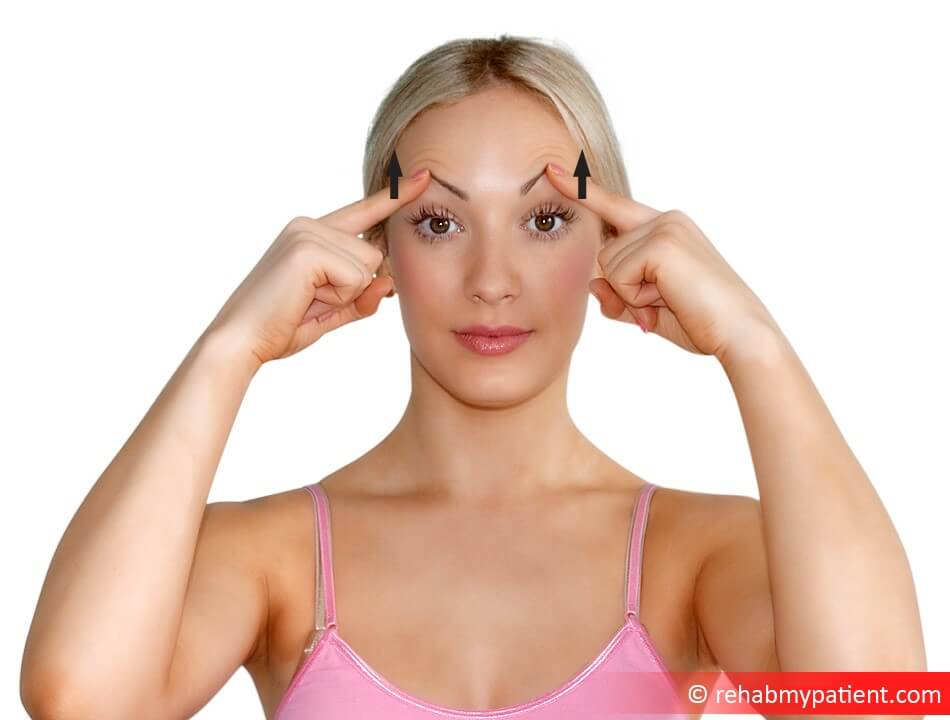
Facial palsy causes a sudden weakness in the face muscles. Half of the face appears to drop down. Your smile becomes more one-sided and the eye on that side of the face doesn’t want to close. The condition can occur at any age. Even though the exact cause isn’t known, it’s believed to be the result of inflammation and swelling in the nerve controlling the muscles on that side of the face. It could be a reaction that occurs after a viral infection (most commonly the herpes virus). Facial palsy is more commonly known as Bell’s Palsy.
For the majority of individuals, the condition is only temporary. Symptoms often begin improving within a few weeks. Complete recovery occurs within six months. A small amount of individuals continue to have symptoms of the condition for the rest of their lives. In rare instances, the condition can recur.
Even though the reason behind why the condition occurs is unknown, it tends to be linked to being exposed to a viral infection. With facial palsy, the nerve controlling the facial muscles, which passes through a narrow corridor of bone along the way to the face, becomes swollen and inflamed. Beyond the facial muscles, the nerve also affects saliva, tears, taste and a tiny bony in the middle part of the ear.
Paralysis and weakness of the facial muscles on one side of the face is the most common symptom, but other than the muscles, taste, tears and saliva secretion can also be affected.
Facial Palsy Anatomy
The facial nerve supplies the majority of the face with sensation. It is responsible for expressions of the face, such as frowning and smiling. It also supplies the muscles used for closing the eyelids. The seventh cranial nerve also takes the taste sensations from the front part of the tongue and into the brain. The nerve enters into the face at the front of the ear. If you were to place your finger near the front part of the ear, you can feel the pulsations where the nerve enters into the face.

How to Treat Facial Palsy:
- Corticosteroids
If this medication can reduce the swelling of the nerve in the face, it will fit a lot more comfortably within the corridor surrounding it. They tend to work best if they are started within a few days of the onset of symptoms.
- Antiviral Drugs
These drugs can help stop the progression of any infections that are caused by viruses. This particular form of treatment is only offered if your paralysis is severe.
- Physical Therapy
Paralyzed muscles can shorten and shrink, which causes permanent contractures. Physical therapists can teach you proper massage techniques and exercises for the facial muscles to help prevent the condition from occurring. Your www.rehabmypatient.com therapist will be able to prescribe many different facial exercises to help.


Tips:
- Protect the eye that you are unable to close. Use eye drops throughout the day and ointment at night to help keep the eye moist.
- Take a pain reliever to help you cope with the pain.
- Putting a washcloth that has been soaked in warm water on the face multiple times per day will help with pain.
- Make sure to adhere to the advice of your physical therapist to strengthen the facial muscles and do the correct exercises.
- In cases where the condition tends to keep coming back, it might be that there is a genetic predisposition to facial palsy.
Sign Up
Sign up for your free trial now!
Get started with Rehab My Patient today and revolutionize your exercise prescription process for effective rehabilitation.
Start Your 14-Day Free Trial